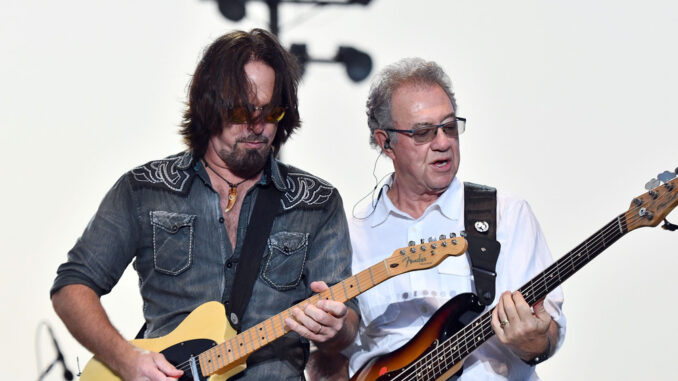
After Creedence Clearwater Revival (CCR) split up in the early 1970s, John Fogerty found himself at a crossroads. The breakup, which was contentious and financially motivated, marked the end of one of the most successful rock bands of the 1960s and early 1970s. The members of CCR, including Fogerty’s late brother Tom, along with Doug Clifford (drums) and Stu Cook (bass guitar), had parted ways due to a mix of creative differences and financial mismanagement, with Fogerty feeling that the band’s management had taken advantage of them.
As the primary songwriter, lead singer, and guitarist of CCR, Fogerty was the driving force behind the band’s massive success, which had included timeless classics like “Bad Moon Rising,” “Proud Mary,” and “Fortunate Son.” However, after CCR disbanded, Fogerty struggled with a sense of betrayal and resentment toward his former bandmates, leading him to withdraw from the music scene for a period. His first solo album, The Blue Ridge Rangers (1973), was an attempt at musical reinvention, featuring Fogerty performing a mix of cover songs and showcasing his versatility as a musician.
It wasn’t until the 1980s that Fogerty truly broke through as a solo artist, with his 1985 album Centerfield marking a major career revival. The title track, “Centerfield,” became one of his most iconic hits, solidifying his legacy as a solo performer. With its upbeat, catchy tune and nostalgic baseball references, the song resonated with both music lovers and sports fans. The success of Centerfield was a reminder of Fogerty’s songwriting genius and ability to craft hits that transcended genres.
The song’s catchy chorus and distinctive sound gave it a timeless appeal, especially when it was adopted by Major League Baseball, further cementing its place in popular culture. It also showed that Fogerty had not lost his touch for creating songs with universal themes, such as Americana, sports, and personal reflection, while still holding onto the spirit that made CCR’s music so beloved.
Fogerty’s solo career would continue to evolve, but Centerfield remains a symbol of his resilience and artistic independence after the bitter breakup with his former bandmates. It was a testament to his ability to reinvent himself while still carrying the legacy of CCR forward. The release of Centerfield also marked the beginning of Fogerty’s own artistic freedom, as he fully embraced his solo career and took control of his own musical destiny, refusing to be defined by his past. Over time, he would reconcile with his former bandmates, but the song “Centerfield” and the album’s success showed that John Fogerty was more than just the frontman of CCR—he was a force in his own right.
Leave a Reply